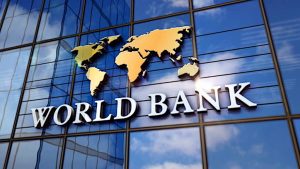Nigeria’s debt service payment,other IDA countries to exceed $62bn in 2022,says World Bank
December 8, 2022658 views0 comments
By Onome Amuge
The publicly guaranteed debt of Nigeria and 73 other countries under the World Bank’s International Development Association (IDA) has been projected to surpass $62 billion in 2022, with China, the world’s second largest economy accounting for about 66 per cent of the total debt service payments.
The figure,according to the World Bank in its recently published international debt report, is projected to reach a 35 percent increase from $46 billion in 2021 to $62 billion in 2022, to become one of the highest annual increases of the past two decades.
David Malpass, the World Bank Group president, during the launch of the report, noted that while China’s debt stock is roughly half of bilateral debt, its debt service payments are around 2/3 of bilateral debt service payments.
Read Also:
- FG’s $3.5bn foreign debt servicing exposes rising vulnerability to external debt
- Access Bank emerges only Nigerian company on Forbes 2024 World’s Best…
- Excessive borrowing, volatile naira drive Nigeria’s public debt to N134.3trn
- LINX set to expand interconnection service delivery into West Africa
- NNPC clears $4.68bn cash call debt to IOCs following petrol subsidy removal
“At the end of 2021, China was the largest bilateral creditor to IDA countries, accounting for $100 billion of their bilateral debt stock, up from $15 billion in 2010,” he disclosed.
The International Development Association (IDA) is a member of the World Bank Group that is committed to offering concessional loans and grants to the world’s poorest developing countries.
 Malpass also disclosed that the debt of IDA-eligible countries,reached $1 trillion, nearly tripling since 2010. He also reiterated that their debt service payments on external public and publicly guaranteed debt are expected to surge 35 per cent
Malpass also disclosed that the debt of IDA-eligible countries,reached $1 trillion, nearly tripling since 2010. He also reiterated that their debt service payments on external public and publicly guaranteed debt are expected to surge 35 per cent
“Over 40 IDA-eligible low-income countries are at high risk of debt distress or already in it. Debt crises are also spreading to middle-income countries. The composition of debt has changed dramatically too, making much-needed debt restructurings harder,” he explained.
The World Bank president further noted that more of the debt owed by the low-and middle income countries is to private creditors. He added that much of that increase came from increased bond issuance, with bondholders now accounting for nearly 80 percent of privately held debt.
“For IDA countries, this was $76 billion owed to bondholders, making restructurings difficult. And more of the debt is owed to non-Paris Club creditors. That’s another change in the composition. Debt owed to government creditors that don’t belong to the Paris Club has soared,” he said.
To address the increase in debt and the new composition, Malpass called for improvements in three areas including debt sustainability, transparency, and restructuring.
“Progress in each area is important to achieve satisfactory outcomes for development,” he said.
According to data from the Debt Management Office (DMO),Nigeria’s external debt owed to China stood at $3.9 billion as of June 30 2022. The data also showed that the total debt represents a 12.7 percent increase from $3.5 billion borrowed in the same period of 2021, accounting for 83.57 percent of Nigeria’s total bilateral debt.
